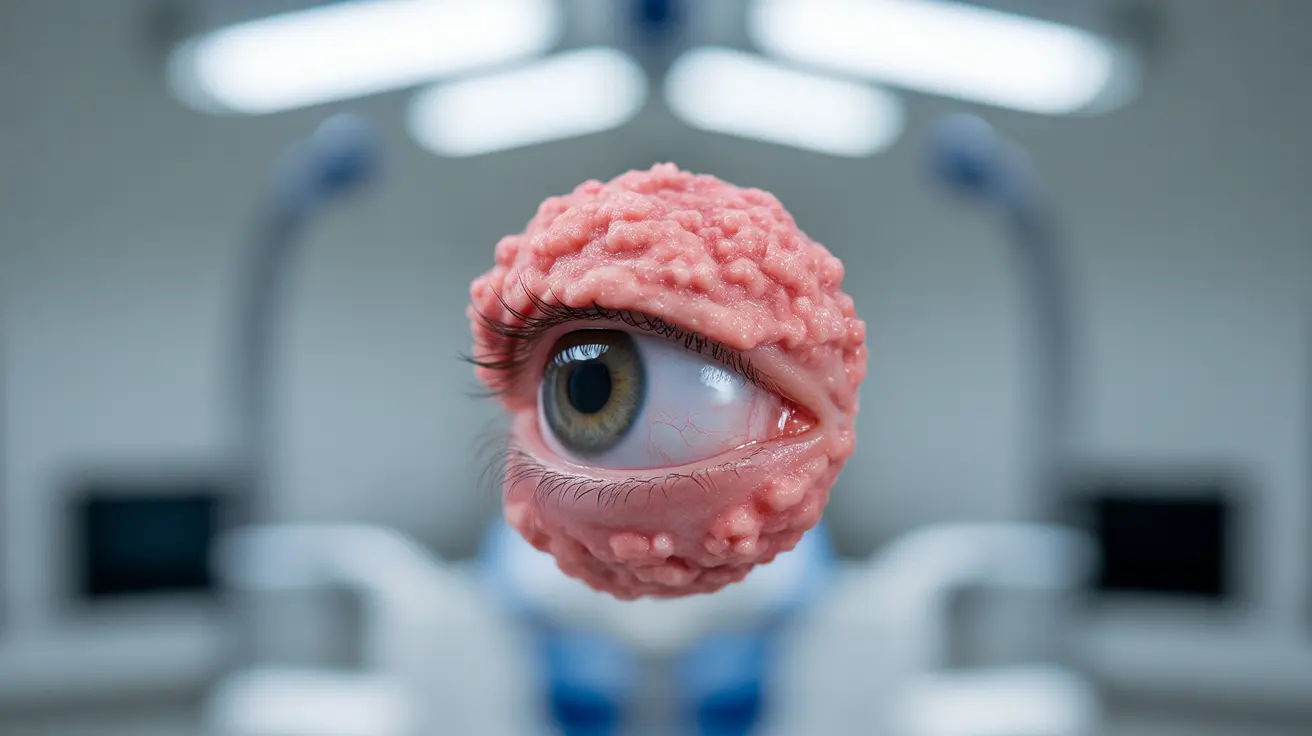Conjunctival granuloma is a distinctive eye condition characterized by the formation of small, raised tissue masses on the conjunctiva, the clear membrane covering the white part of the eye. This condition can cause discomfort and concern for those affected, but understanding its nature, causes, and treatment options is crucial for proper management.
While conjunctival granulomas may appear alarming, they are often treatable with appropriate medical intervention. This comprehensive guide will explore the key aspects of this eye condition, helping you understand when to seek medical attention and what to expect during treatment.
Understanding Conjunctival Granuloma
Conjunctival granulomas are inflammatory lesions that develop on the eye's surface. These raised, pink to red masses can vary in size and may appear as single or multiple growths. Understanding their characteristics is essential for early recognition and proper medical care.
Common Signs and Symptoms
The manifestation of conjunctival granuloma can include several distinctive symptoms:
- Visible raised bump or mass on the white part of the eye
- Redness around the affected area
- Mild irritation or foreign body sensation
- Occasional tearing or discharge
- Slight discomfort when blinking
Causes and Risk Factors
Several factors can contribute to the development of conjunctival granulomas:
Inflammatory Conditions
Chronic inflammation of the eye can trigger granuloma formation, often associated with underlying systemic conditions or localized eye infections.
Surgical Complications
Some cases develop following eye surgery, particularly if suture material remains in the eye or healing becomes complicated.
Foreign Body Reaction
The presence of foreign materials in the eye can stimulate an inflammatory response leading to granuloma formation.
Diagnostic Process
Proper diagnosis of conjunctival granuloma typically involves:
- Detailed eye examination using a slit lamp
- Review of medical history
- Assessment of associated symptoms
- Possible biopsy in certain cases
Treatment Approaches
Treatment options for conjunctival granuloma vary depending on the underlying cause and severity:
Medical Management
Topical medications, including steroids and anti-inflammatory drugs, are often the first line of treatment. These help reduce inflammation and promote healing.
Surgical Intervention
In cases where medical management is insufficient, surgical removal of the granuloma might be necessary. This is typically performed under local anesthesia as an outpatient procedure.
Prevention and Long-term Care
While not all cases of conjunctival granuloma can be prevented, certain measures can help reduce risk:
- Regular eye check-ups
- Proper eye protection during activities
- Prompt treatment of eye infections
- Careful post-operative care following eye surgery
Frequently Asked Questions
- What are the main symptoms of conjunctival granuloma and how can I recognize them?
The main symptoms include a visible raised bump on the eye's surface, redness, mild irritation, and occasional tearing. The granuloma typically appears as a pink or red mass on the white part of the eye and may cause a feeling of having something in your eye.
- What causes granulomatous conjunctivitis and can it be contagious?
Granulomatous conjunctivitis can be caused by inflammatory conditions, surgical complications, or foreign body reactions. While the condition itself isn't typically contagious, some underlying causes might be infectious in nature.
- What are the treatment options for conjunctival granuloma and how effective are they?
Treatment options include topical medications like steroids and anti-inflammatory drugs, and in some cases, surgical removal. The effectiveness varies depending on the underlying cause, but most cases respond well to appropriate treatment when diagnosed early.
- Can conjunctival granuloma lead to vision loss or other serious complications?
While conjunctival granulomas rarely cause direct vision loss, untreated cases could lead to complications or indicate more serious underlying conditions. Regular monitoring and proper treatment are essential to prevent potential complications.
- How is conjunctival granuloma diagnosed and when should I seek medical help?
Diagnosis involves a comprehensive eye examination using a slit lamp and review of medical history. Seek medical help if you notice any persistent bump on your eye, experience ongoing irritation, or develop changes in vision.




